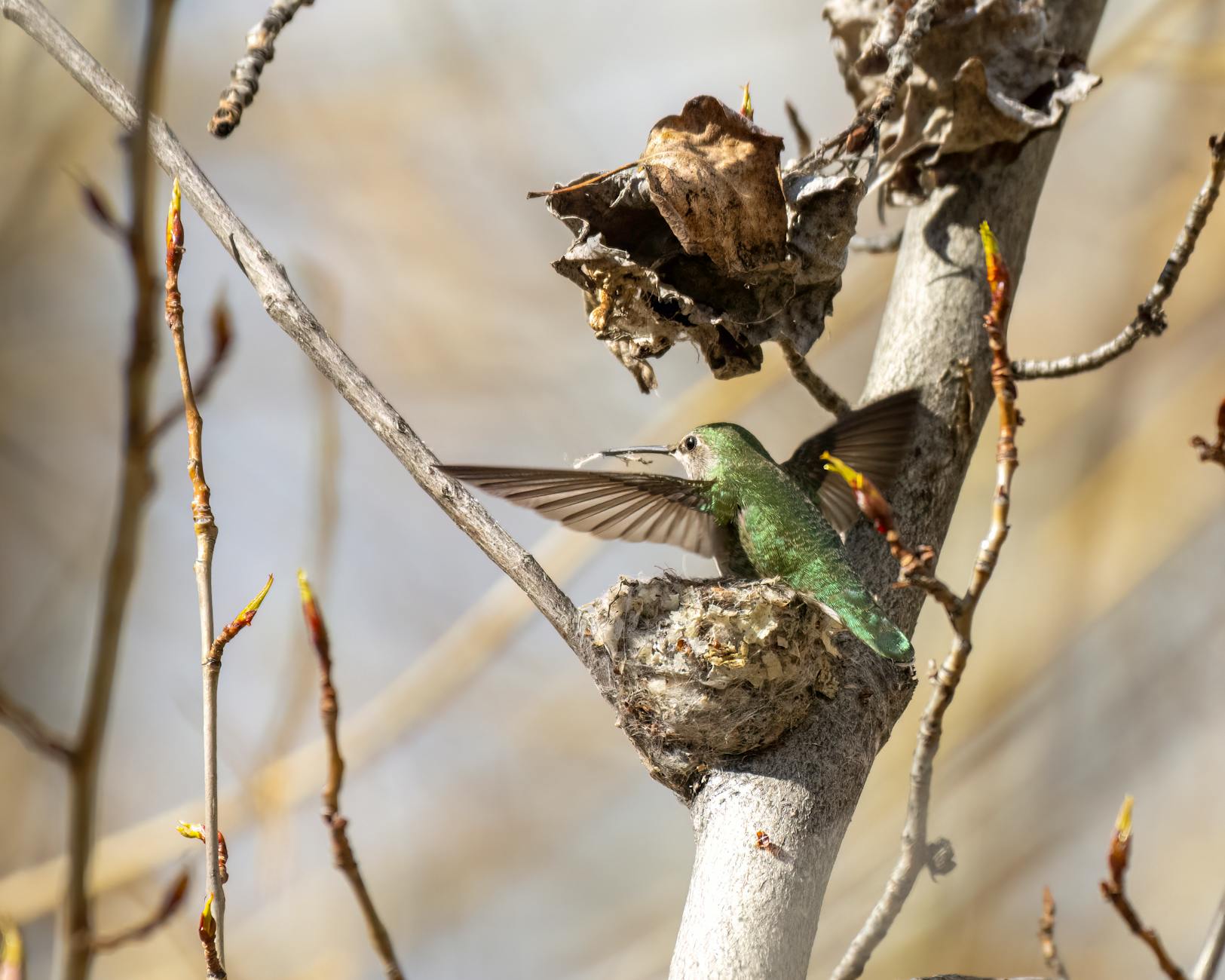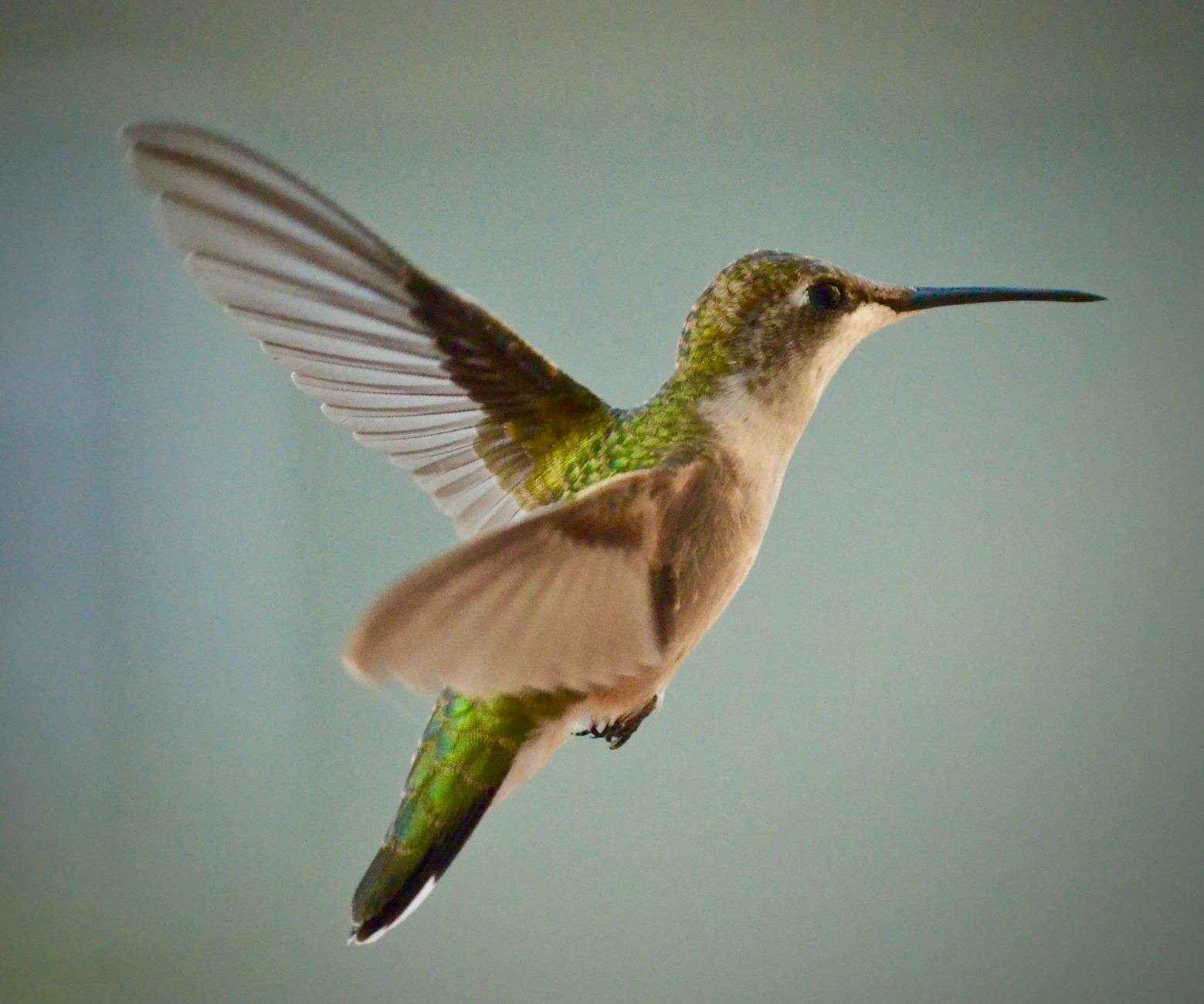
How Big Are Hummingbird Eggs? A Simple Guide to Their Tiny Size
Imagine holding a pearl in your hand – that’s about the size of a hummingbird egg. Tiny yet mighty, these little wonders grow into some of the most fascinating birds on Earth. In this post, you’ll discover just how small these eggs are, their place within the delicate nest, and other amazing facts that make them truly unique.
Understanding the Size of Hummingbird Eggs
Hummingbird eggs are miniature marvels. They’re incredibly small yet carefully designed to nurture new life. Let’s explore their dimensions, relatable size comparisons, and even their weight in this section.
Typical Dimensions of a Hummingbird Egg
On average, a hummingbird egg measures about 1.2 to 2 centimetres in length and 0.8 to 1.3 centimetres in width. These tiny dimensions make them among the smallest bird eggs in the world. Despite their size, these eggs are sturdy enough to house the beginnings of a hummingbird’s life. Their elliptical shape helps distribute pressure evenly, reducing the risk of breakage.

Photo by Dorota Semla.
Comparing Hummingbird Eggs to Everyday Objects
It can be difficult to visualise such tiny measurements without context. To give you a better idea:
- A jellybean is roughly the same size as a hummingbird egg, making it a handy comparison.
- If you’ve ever seen the average coffee bean, a hummingbird egg is only slightly larger.
- Think of a blueberry, a fruit of similar size and shape to these eggs.
In real life, holding something like a jellybean can help you understand just how delicate these eggs really are – small enough to hide within the palm of your hand.
The Weight of Hummingbird Eggs
As you might expect, something this small doesn’t weigh much at all. A hummingbird egg typically weighs between 0.4 and 1.4 grams, which is lighter than a single paperclip. You read that right – a humble paperclip often outweighs one of these eggs! This minimal weight ensures the eggs don’t burden the mother or the fragile nest she’s built.
Despite their lightness, these eggs contain all the essential nutrients required for development. It’s fascinating how nature packs so much potential into such a tiny and delicate package.
Why Hummingbird Eggs Are So Small
Hummingbirds are nature’s smallest, most energetic wonders, and their eggs follow suit. But why are these eggs so tiny? Let’s break it down by looking at the bird’s size, energy needs, and nesting instincts.
The Role of Hummingbird Size
Hummingbirds are among the tiniest birds on the planet. Most species, including the Ruby-throated hummingbird, measure only around 7 to 13 centimetres long. With a body so compact, the size of their eggs aligns proportionally. Larger birds naturally lay bigger eggs because their bodies can accommodate more resources and space—hummingbirds simply do not have this luxury. Think of it as a small purse: it can only fit what’s essential, and for hummingbirds, miniature eggs are a perfect fit for their petite frames.
Smaller eggs aren’t just logical; they’re essential for the bird’s survival. To carry and lay eggs much larger than their bodies could handle would overburden these tiny creatures and compromise their agility and mobility.
Energy Efficiency in Egg Production
Hummingbirds are known for their incredibly high-energy lifestyles. Their hearts beat at a mind-boggling rate of up to 1,200 beats per minute, and they need to consume a significant amount of nectar each day just to stay fuelled. Producing large eggs would require a colossal amount of energy, leaving little left for their daily survival.
By laying small eggs, mother hummingbirds conserve energy. This efficiency is crucial, as it allows them to maintain their active foraging routines without depleting their reserves. It’s a well-orchestrated balance—nature’s way of ensuring these tiny powerhouses can thrive without being overwhelmed by the demands of reproduction.
Nest Environment and Egg Protection
Hummingbird nests are just as astonishing as the birds themselves. These nests, often woven from spider silk, moss, and plant fibres, are tiny yet sturdy. Their compact size works in harmony with the minuscule eggs, providing a snug and secure space.
The small eggs are easier to camouflage and protect in such small nests. This is particularly important given the treetop locations where hummingbirds often place their homes. Smaller eggs are harder for predators to spot, mimicking the speckled textures of tree bark or leaves, making them blend seamlessly into their surroundings.
Hummingbird nests aren’t just shelters—they’re marvels of engineering that perfectly accommodate these little eggs. The elasticity of materials like spider silk helps the nest expand as the chicks grow, offering protection without compromising the structure.
Inside the Nest: A Closer Look
Hummingbird nests are architectural wonders, carefully crafted to support the fragile eggs they protect. Each nest is a reflection of the bird’s resourcefulness and instinct, blending functionality with clever design. Let’s take a closer look at their structure, how eggs are positioned, and the strategies used for concealment.
Structure and Size of the Nest
Hummingbird nests are incredibly small, measuring around 3 to 5 centimetres in diameter – roughly the size of a ping-pong ball. Despite their tiny size, they are marvels of construction. Female hummingbirds use a mix of spider silk, moss, and plant fibres to build their nests. The silk acts like elastic, allowing the nest to stretch and accommodate growing chicks.
These nests are lightweight yet durable. They’re often tucked away on tree branches or shrubs to stay out of sight. This ingenious combination of materials and design ensures the safety of the eggs while maintaining a snug environment.

Photo by Frank Cone.
Placement of the Eggs in the Nest
Inside the tiny nest, the eggs are carefully arranged to maximise warmth and safety. Typically, a hummingbird lays one to two eggs at a time. These eggs are positioned side by side, ensuring their mother can easily cover both while incubating. The snug fit of the nest prevents the eggs from rolling around or getting damaged.
The female hummingbird plays an active role in regulating the temperature of the eggs. By nesting close to her body, she provides the warmth needed for the embryos to develop. This positioning also protects the eggs from external threats like wind or sudden movements. The design of the nest coupled with its tiny occupants creates a nearly perfect system of safety and care.
Camouflage and Predation Defence
Hummingbird nests are designed not just to nurture but to protect. Camouflage is key in their fight against predators. The outer layer of the nest is often decorated with lichens, bits of bark, and moss, blending seamlessly with the surrounding environment. This makes it difficult for potential threats, such as snakes or larger birds, to spot the nest.
Additionally, the strategic placement of nests high up in trees or hidden amongst dense foliage further deters predators. The use of spider silk strengthens the structure while remaining nearly invisible to the untrained eye. This combination of materials and location transforms a delicate nest into a fortress of survival.
Hummingbirds demonstrate remarkable resourcefulness in every aspect of their nests. From its compact size to carefully placed eggs and natural camouflage, each element works together to ensure the continuation of their lineage.
Fascinating Facts About Hummingbird Eggs
Hummingbird eggs are some of the tiniest wonders of the avian world. Despite their small size, they hold the potential to transform into one of nature’s most dynamic creatures. However, these delicate eggs face unique challenges and follow fascinating patterns that make their life cycle truly remarkable.
Lifespan of Hummingbird Eggs
Hummingbird eggs are incubated for approximately 14 to 18 days after being laid. During this time, the female hummingbird plays a critical role in ensuring their survival. She keeps the eggs warm by resting on the nest, rarely leaving except to feed. The precise temperature regulation by the mother is necessary for the embryos to develop properly.
You might be surprised to know that many species, like the Ruby-throated hummingbird, align their nesting season with the abundance of nectar and insects. This ensures there’s enough energy-rich food available for the mother as she incubates the eggs. Within these few weeks, nature quietly works its magic, preparing these tiny eggs to hatch into lively chicks.
Challenges in Survival
The survival of hummingbird eggs is nothing short of a miracle. With their tiny size and highly visible nests, these eggs often face numerous challenges, including:
- Predators: Common threats like snakes, crows, and larger birds often target nests hidden in plain sight.
- Weather Conditions: Sudden changes, such as storms or wind gusts, can displace these lightweight eggs.
- Human Activity: Intrusion into nesting areas by humans, whether intentional or accidental, can destroy nests or frighten the mother into abandoning her eggs.
Camouflage plays a significant role in survival. The mother uses natural materials like moss and lichen to conceal the nest, blending it into the surroundings. Despite their best efforts, many hummingbird eggs don’t make it past this stage due to these external threats, but those that do emerge as resilient fighters.
How Often Do Hummingbirds Lay Eggs?
Hummingbirds typically lay eggs once or twice a year, depending on their species and climate conditions. During each breeding cycle, the female lays one or two eggs, which is a remarkably low number compared to other birds. Why so few? Quite simply, smaller clutches increase the chances of survival for the eggs and the chicks.
The breeding process is an annual ritual, usually timed with the blooming of flowers and an increase in insect populations, which form the staple diet for the tiny chicks. After the young birds leave the nest, the female may build a new nest and repeat the process, ensuring the continuation of her species.

Photo by AS R.
Hummingbirds’ modest yet remarkable egg-laying process is an example of nature’s efficiency. These miniature miracles are an essential part of the bird’s life and continuation, making their survival all the more impressive.
Conclusion
Hummingbird eggs are tiny marvels of nature—small enough to fit on a jellybean yet brimming with life. These miniature creations embody the efficiency and delicacy required for hummingbirds to thrive in their fast-paced world.
Our responsibility is to appreciate these natural wonders without disturbing their fragile ecosystems. If you ever find a nest, observe from a distance and cherish the unique story unfolding within.
Take a moment to marvel at how the tiniest beginnings lead to some of the most extraordinary creatures in our skies. How will you protect and support nature’s smallest treasures?






